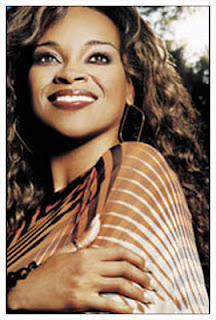Vocal Type:Soprano
Vocal Range: 4 Octaves 2 note and a semi-tone D3-F#7
Whistle Register: Yes
Vocal Strengths: A technical singer, who was operatically trained. Amazing control allowed for effortlessly sustained notes in all parts of the range and brilliant command of dynamics. In combination with this, Minnie possessed a fluidity and a dexterity that made it possible for melisma to be used throughout the registers.
The lowest notes were of medium weight, and of a darker colouring to the rest of the voice. But it was a few notes above this, in her mid-range, that the Diva began to exhibit the mastery that flows throughout the rest of range- being easy, carefree and full of character. Though not often as appreciated as her higher notes, this part was the most emotive and expressive. From sensual and alluring [
Inside My Love] to being tinged with Indignance and annoyance [
Take A Little Trip], it was here that Minnie sounded most human
, unimpeded by the ethereal and unearthly quality her higher range would often impart to the lyric.
The overall lightness of the voice lent itself best to the upper register, with the chest voice being expertly mixed so that a high fifth octave belt displayed none of the usual signs of strain or pull [
Reasons]. Notes sung here were elastic and controlled, with the timbre and colouring being changed depending on the ratio of head to chest voice used in the mix.
The head voice itself was bright and resilient and could switch between a lighter, softer pop styling [
Young Willing And Able] or a fuller, grander operatic tone [
Stay In Love ]. Minnie sounded to be extremely comfortable here, hitting and accessing notes without issue. Like between the chest and head voice, she ascended up into the next register, seemingly without break. This effectively gave the illusion of a seamlessly connected range. [Listen to her climb it in the climax of
Can You Feel What I'm Saying]
Her whistle register, which is unfairly what she is most often remembered for, was bright and versatile; allowing for her to enunciate words within it [
Back Down Memory Lane], mimic instruments and copy intricate birdsong [
Loving You]. The timbre and tone could also be manipulated, being biting and direct in one song [
Here We Go] and less obtrusive and soft in another[
Inside My Love]. Minnie could access this part of the range swiftly, and repeated did so from different parts of the lower ranger.
Despite it's overarching delicate, feminine and sweet nature, the voice exhibited a power that wasn't attained from volume or brute vocal force, but clever use of skill, range and emotive ability.
Vocal Weaknesses: The bottom extreme of the range wasn't as strong, or versatile as the higher parts.





















